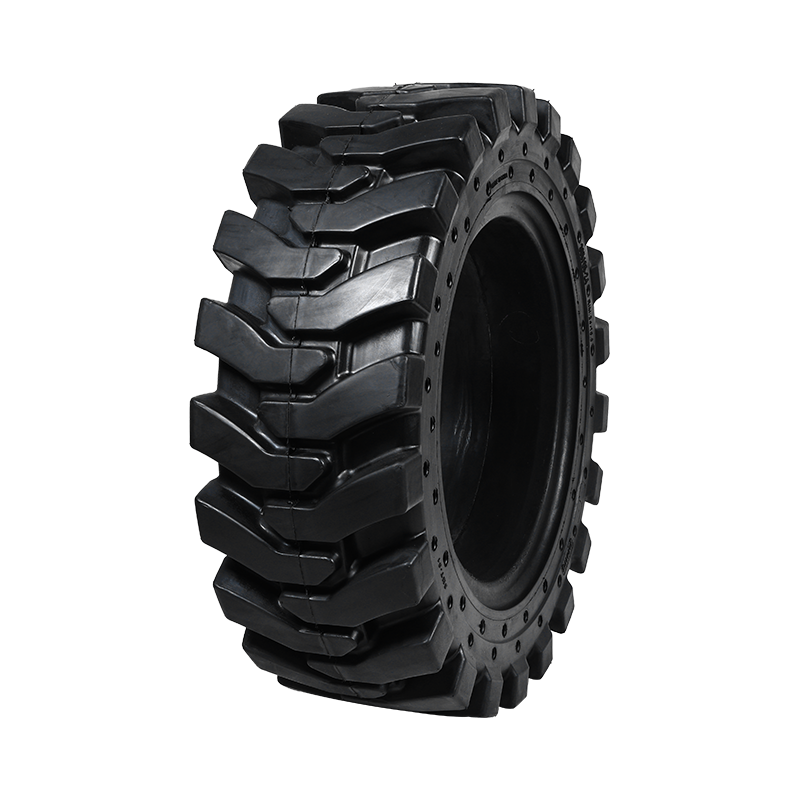Choosing the Right Skid Steer Tires for Maximum Efficiency
1. Tire Type: Solid vs. Pneumatic
The first major decision is choosing between solid tires and pneumatic tires. Pneumatic tires are air-filled, offering better shock absorption and a smoother ride, making them ideal for working on softer surfaces or uneven ground. However, they’re more prone to punctures and may require more maintenance.
On the other hand, solid tires are more durable and resistant to punctures, offering a more robust solution for tough terrain or industrial environments. They tend to last longer than pneumatic tires and require less upkeep, but they can create a rougher ride on softer surfaces.
2. Tread Pattern: Understanding the Terrain
The right tread pattern is critical for maximizing traction and stability. For general-purpose use, a standard tread pattern is usually enough to handle a variety of conditions. However, if you’re working in specific environments, you may need specialized treads.
Radial Tread Tires are best for hard-packed surfaces or pavement. They offer a good balance of traction and durability.
Non-Marking Tires are commonly used in environments where cleanliness is a concern, such as in warehouses or on polished floors. They leave little to no trace, making them ideal for indoor work.
Turf Tires are a great choice for maintaining lawns, as they reduce the chance of damaging grass while still offering decent traction on soft soil.

3. Tire Size: Not One-Size-Fits-All
Skid steer tires come in various sizes, and choosing the correct size is crucial to the overall balance and performance of the machine. The tire size can affect the loader’s lift capacity, speed, and maneuverability. Typically, larger tires provide more flotation and are better for working in soft soil or muddy conditions, while smaller tires are more suited to tight spaces or more controlled environments.
4. Load Capacity and Durability
It’s important to match the tire’s load capacity with the weight of the skid steer and any attachments. Overloading tires can cause premature wear or even failure. Pay attention to the manufacturer’s guidelines and consider factors like the terrain, frequency of use, and tire lifespan when making a decision. High-quality tires from well-known brands tend to offer better durability and resistance to wear, ensuring a longer service life and better return on investment.
5. Price vs. Quality: Striking the Right Balance
While it can be tempting to opt for cheaper options, investing in higher-quality tires will pay off in the long term. Tires are one of the most critical components of a skid steer, and poor-quality ones can negatively affect your machine's performance, fuel efficiency, and overall safety. Although high-end tires are initially more expensive, they offer better durability, safety, and lower maintenance costs, which can ultimately save you money over time.
CONTACT US
-

Email: SMT001@saimeite-tyre.com
-

Phone: +86-18451337018No. 1, Renmin South Road, Yandu District, Yancheng City, Jiangsu Province, China

 English
English 한국어
한국어 Français
Français Español
Español











